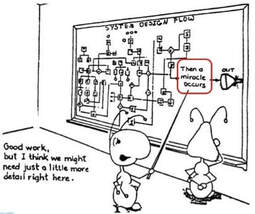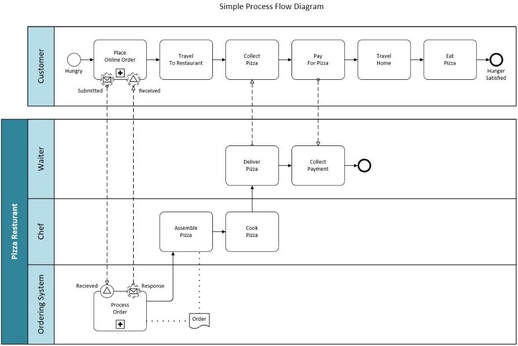 A key factor in the success or failure of a business is the quality and consistency of its processes. If a company produces the best widget on the market but its fulfillment process is broken or its customer service department cannot effectively resolve issues, how likely is it that the company’s new customers will become repeat customers? Given the importance of effective, repeatable processes, we might expect companies would be laser focused on ensuring the quality of their processes. It’s surprising to learn that this is often not the case. Many times, what a company’s management believes is going on – and what is actually happening in the trenches – are sometimes two very different things. The hard truth is that left to themselves, even carefully designed and implemented processes tend to morph over time in response to an evolving business environment. So how can your organization get and keep a handle on its processes? 1. KNOW WHAT YOU'RE REALLY DOING The best way to know what your processes really are is to explore and document your day-to-day processes with a thorough process analysis. During this analysis, a business analyst interviews the resources involved in the process to identify its inputs, work steps, decision points and outputs. The results of such an analysis is typically a process flow diagram (a.k.a. flowchart). This diagram is a graphical representation of the process, which can provide a meaningful understanding of that process at a glance. Many analysts will also listen for operational pain points. Pain points commonly represent difficulties or delays in performing the internal tasks. Pain points can also have a negative impact on your customers’ experience. It’s important that we uncover these opportunities for growth and improvement during this discovery period. 2. MAKE IMPROVEMENTS Once the organization knows what it is doing, it can decide if this is what it wants to continue doing. A analysis of the process’ flowchart can:  Identify Opportunities for Improvement It is easy to miss the forest for the trees, especially when a process spans multiple people and/or teams. A process flow analysis can unearth redundancies and gaps that may not otherwise be identified. We can also highlight where the pain points are occurring within and across process handoffs. Unearth Inconsistent Execution It is surprising how common it is, especially on large teams or with very complex processes, for a process flow analysis to reveal that team members are executing a process differently and receiving different outcomes. Highlight Automation Opportunities With the creation of workflow tools like Microsoft Flow, some manual steps, such as generating an approval request email are ripe for automation. A process flow analysis can help reveal such opportunities. 3. USE WHAT YOU KNOW It’s not enough to know what your processes are if that knowledge isn’t put to use. Using flowcharts enables you to: Promote Consistency of Outcomes Whether it be in training, customer service, billing etc. flowcharts can help to ensure that an organization’s teams are consistently following best practices and producing high quality outcomes. Ensure Regulatory Compliance Flowcharts can help satisfy regulations requiring clear documentation of an organizations systems and processes. Provide a Map for Benchmarking Metrics Allowing for the measurement of current performance, setting goals and consistently observing improvements in relation to the processes being used. 4. MANAGE CHANGE Once you understand your processes and are satisfied with them, it isn’t time to rest on your laurels. Put your knowledge to use! To ensure that you remain in control of your processes you must manage changes to them. This can include: Implementing Change Control Requiring that all changes to a process, especially one that involves multiple teams, be reviewed and approved prior to implementation, and then is formally communicated to all impacted teams. This not only controls “process drift”, it also reduces the likelihood that these changes will break the process entirely. Planning for Change Anticipating changes to the environment in which your business operates can help you to predict and plan for changes to your processes. If possible, put together a roadmap of when and how your processes may need to change. This roadmap can then be managed within your upcoming projects, or as a dedicated process governance work stream. 5. REVALIDATE
It is possible that, despite your best efforts, a process may experience “drift” or that it may no longer meet the needs of the business. It is important to conduct periodic process flow checkpoints to ensure your process remains relevant. Getting and keeping a handle on the critical processes that drive your business is important! A thorough process flow analysis is an important tool in achieving this and helping your team achieve operational excellence. Our experienced team of Business Analysts can help identify, document and assist you in establishing controls to manage your mission critical business processes. For more information contact us today! |
Categories
All
Archives
June 2023
Subscribe |

 RSS Feed
RSS Feed
